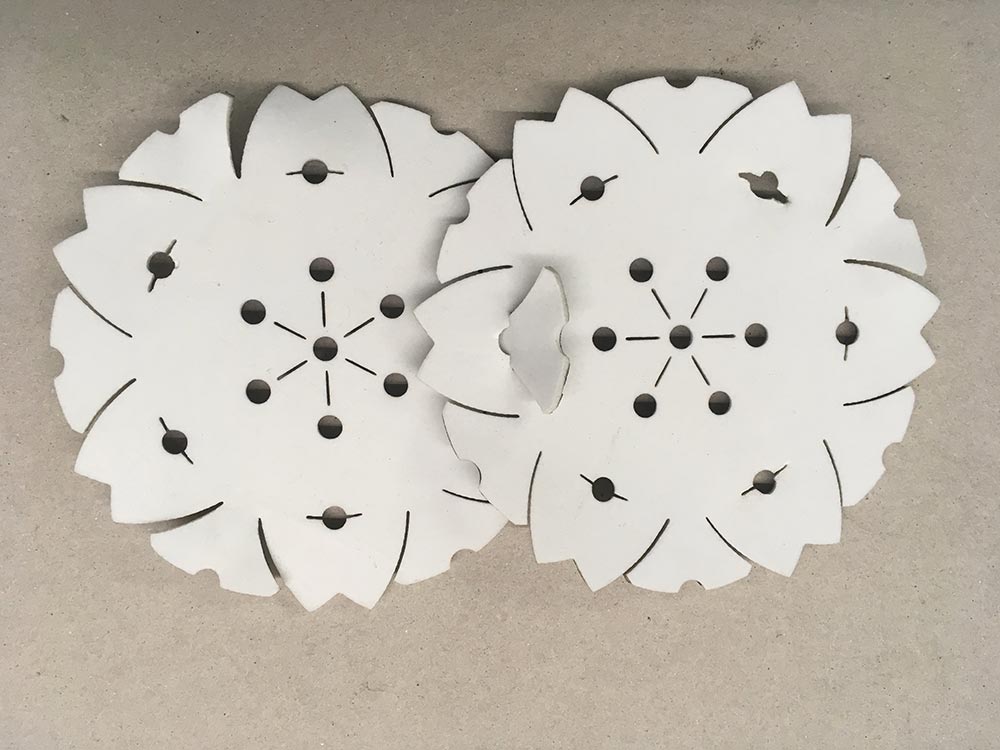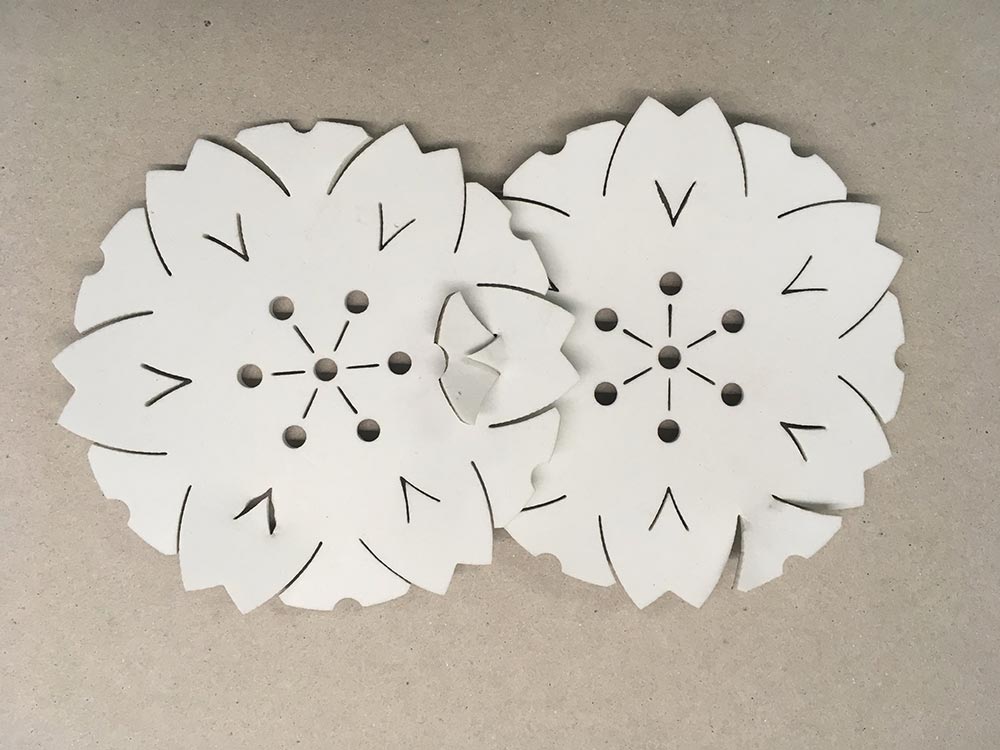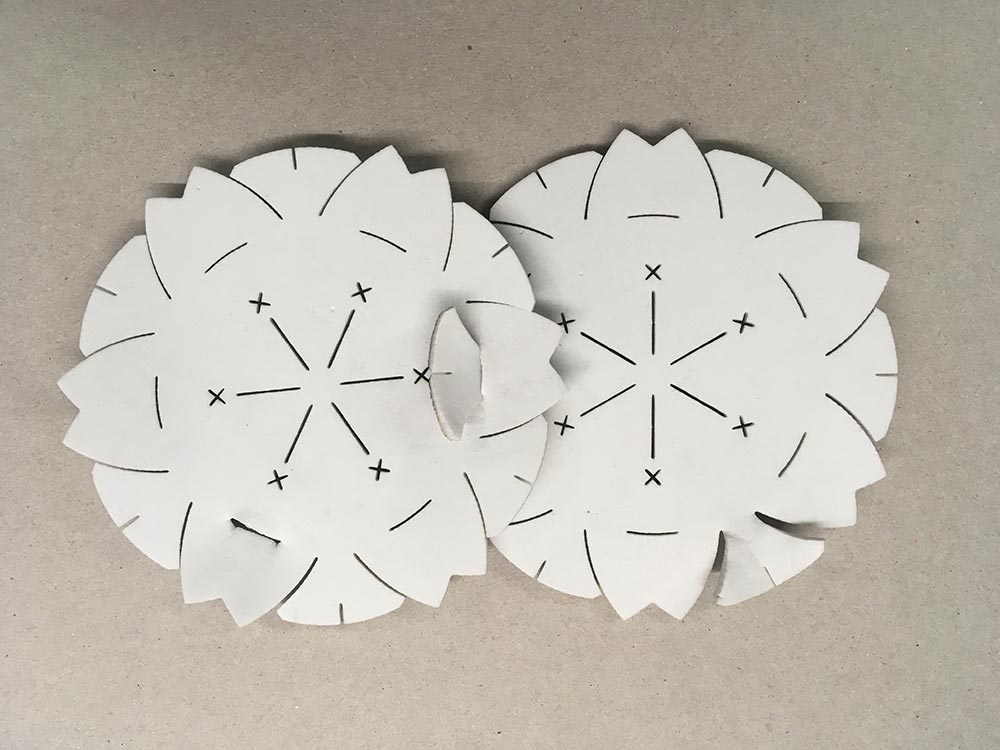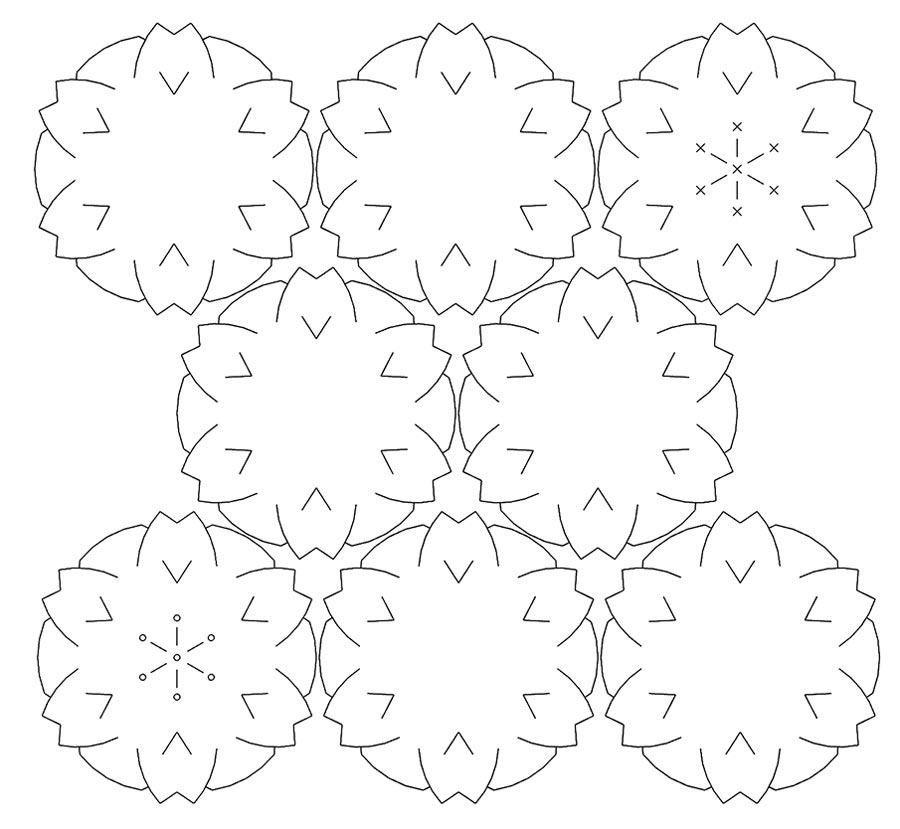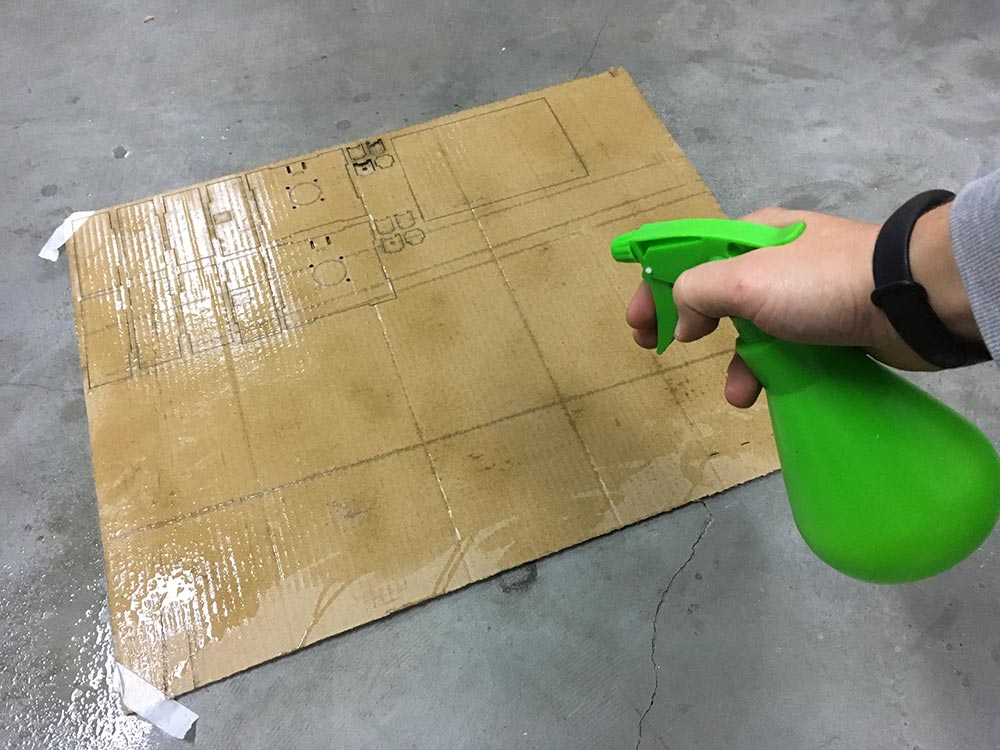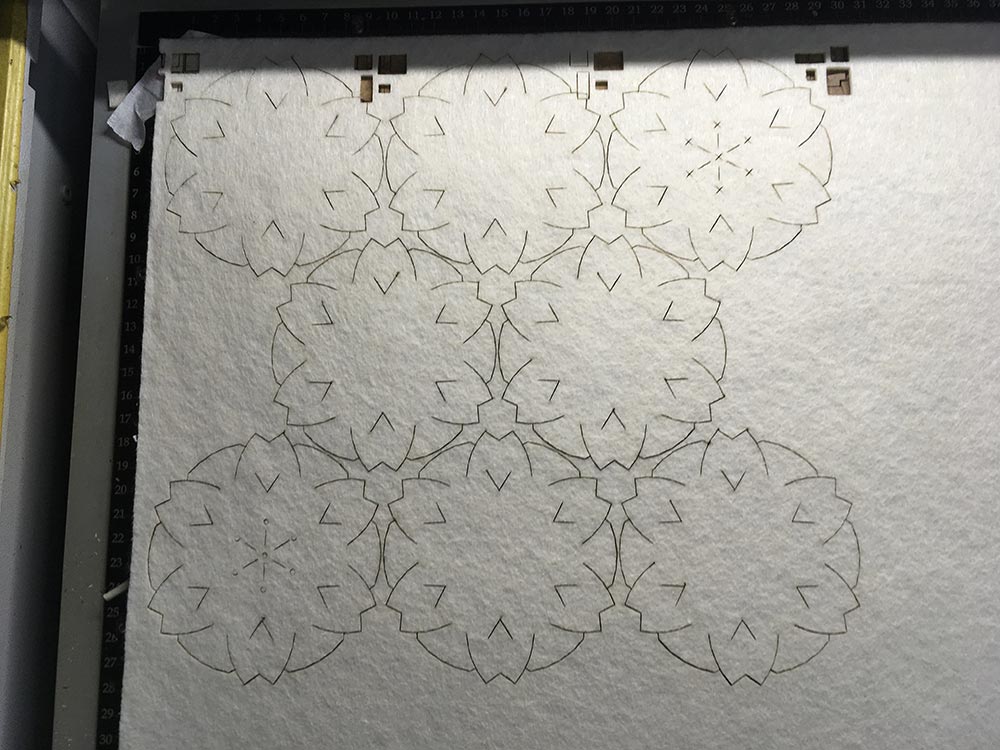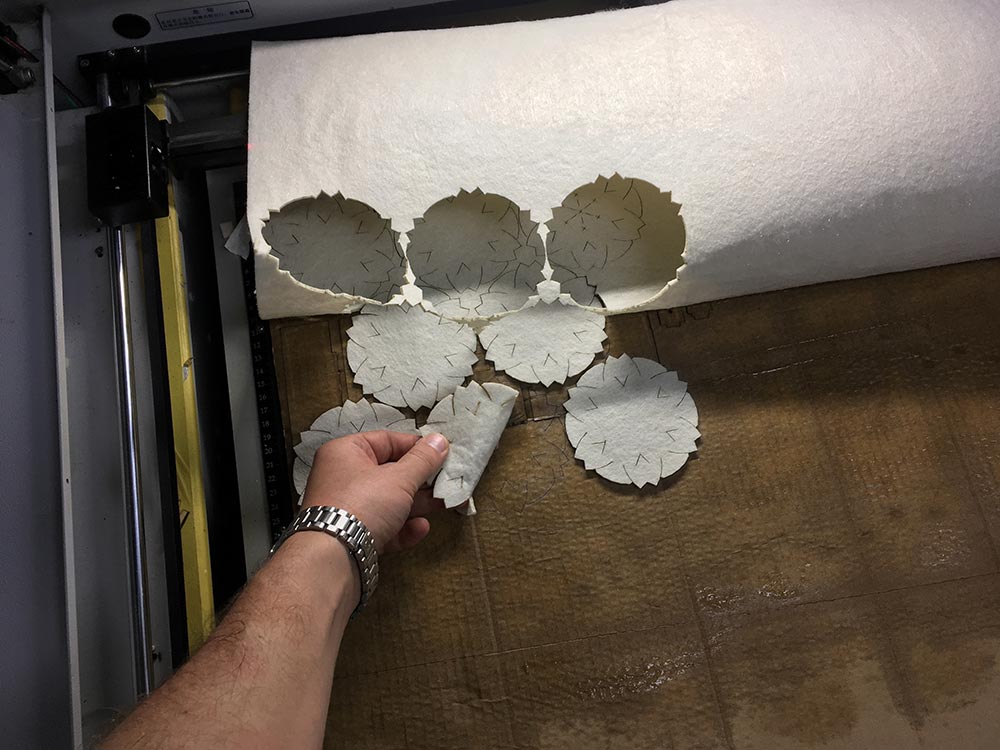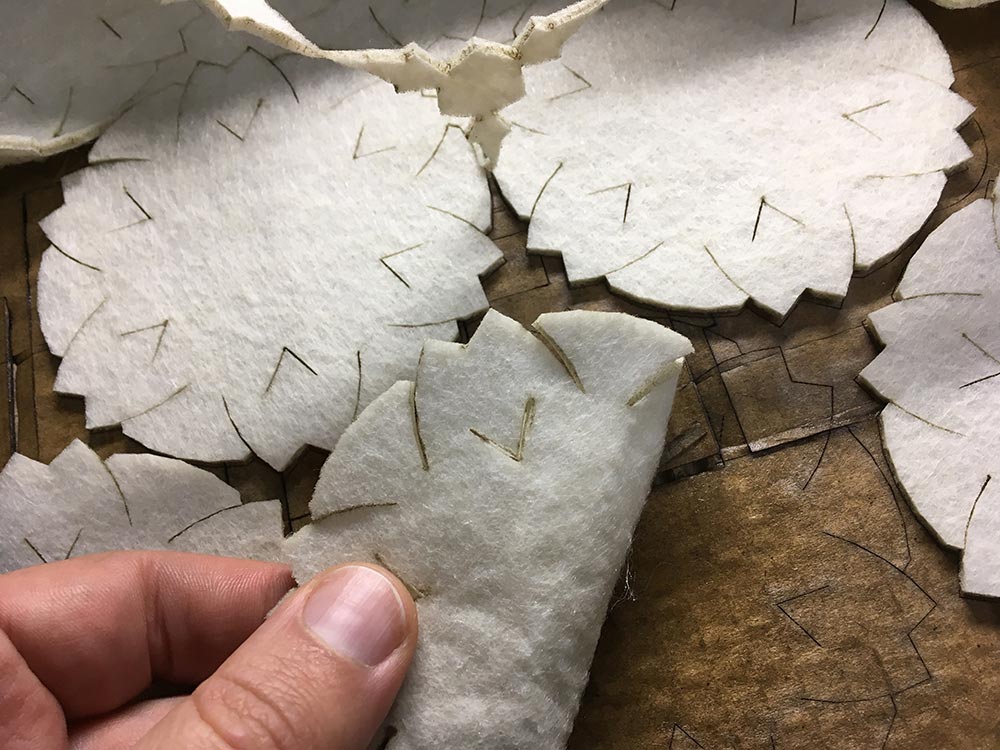Circular Open Source Fashion
Class three - 10 October 2017
Researching traditional patterns
I started my assignment by making an online research for patterns often used in Chinese garments and fabrics. I also checked all my reference pictures from I have taken in history museums I visited and I asked my local colleagues. It came out that flowers and animals are used extensively in many styles and shapes. They all have some symbolic meaning and it is interesting to notice how the shapes sometimes follow the medium used to make the pattern. The magnolia flower is very characteristic of Shanghai and it is represented in many ways. It can be drawn using brushes and ink as in the traditional painting style (in this case the shape follows the way you move the brush where a single stroke is used to draw a petal) or it is often stylized in two dimensions, and it can be found on laquers or engravings.
Designing the modular pattern
The first consideration I made designing the modular tile is that using a pentagonal structure might have lessen the possible combinations in which the modules could be assembled. On the other hand, Magnolia Flowers are always represented with five petals... but I am not afraid of breaking the rules and I went for an exagonal structure nevertheless. The main concept in designing the module is that the petals have a cut in which you can slide and hold the piece that connects with the next module. The connection piece is the resulting shape between two adiacent petals. Also, I like that when the pieces are connected the petals should be made more visible by sticking out of the surface. But I would not know it that is true until I make a test cut.
Cut, test, modify. Cut, test, modify...
I moved to the laser cutter with four different designs and made a test cut on 3mm EVA foam. Meanwhile I ordered 3mm felt in white and grey color but I am waiting for it to be delivered. I discarded design #4 as it makes the tiles overlap too close to the respective centers. The shape of the connection cuts in design #2 create a very interesting effect that also allows for an esier insertion and tighter fit. I like the more stylized layout of design #3 and design #1 doesn't really have anything special.
Eventually I decided I will start over from #2 making it a little more simple. Also I got rid of any curved lines and rendered them with segments in order to speed up the lasercutting job. The new design has two types of modules, the largest number don't have features in the middle. Some of them have additional details in the center. I plan to cut the two types out of felt in two colors to have a contrasting effect (white for the simple one, grey for the special one, or the other way around).
Fabricating the modular kit
I cut the modules out of white and grey felt. I placed the felt on a piece of scrap cardboard that I rinsed with water from a spray bottle as it was suggested by Anastasia during review. This way the heat of the laser beam is absorbed by the water and the felt doesn't get any stain on the back side of it by laser reflecting on the bed or burning from the cardboard. Thanks to the adjustments I made on the drawings the cutting process was really fast: I got rid of any curved shape and made all the line straight, rendering any arch with three or four straight segments. This way the laser is always moving at full speed and acceleration. The final shape is perfect.
Styling the modules
I'm not a fashion designer and you can tell. I tried to style the modules laying them over my me-nnequin and I have to say it has been a lot of fun. When I designed the modules I wanted to be able to assemble them in many ways: it is easy to make flat 2D panels, but by connecting two modules with a rotation of 30 degrees you suddenly move the shape in three dimensions and you can follow the shape of a body. I made a kind of scarf/neck-piece. I must say I'm pretty satisfied with it, the felt allows for an extremely flexible structure, but the joints are very strong and keep their position without unexpected unlacings.
Plans for dissemination
I created a new project called "Magnolia Flowers" and uploaded the documentation about it on http://oscircularfashion.com/
Files Storage
This website by Saverio Silli (based on Twitter Bootstrap) and all its content is licensed under the following license: CC Attribution-Share Alike 4.0 International.



